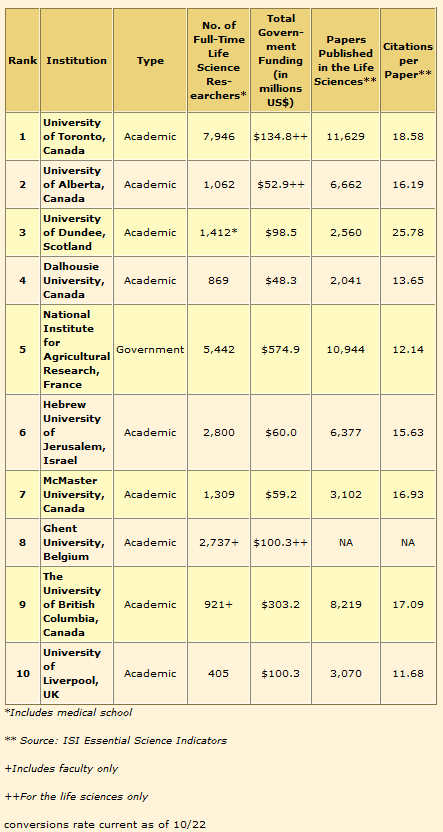|
News & Views item - November 2004 |
![]() A Good
Place to Work for Scientists. (November 8, 2004)
A Good
Place to Work for Scientists. (November 8, 2004)
Theresa Tamkins writing in Today's The Scientist writes, "Best Places to Work | Oh, Canada! Piece by piece, Canada is building a science-friendly infrastructure, and researchers are taking note."
As if in response to last week's release of the The Times' Higher Education Supplement of university rankings this is all in aid of The Scientist's 2004 survey of the Best Places to Work in Academia. Tamkins writes, "[I]t's no fluke that for the first time, five Canadian universities are in the top 10 of The Scientist's 2004 survey of the Best Places to Work in Academia."
Bruce McManus, a professor of pathology at the University of British Columbia in Vancouver and head of the Institute of Circulatory and Respiratory Health at the Canadian Institutes of Health Research told Tamkins, that since the late 1990s the Canadian research environment has undergone "a virtual revolution... The federal government alone has injected somewhere in the range of $13-15 billion new dollars into a combination of personnel awards." In addition, Tamkins adds, "The Canada Foundation for Innovation also poured $10-11 billion of new funding into major infrastructure upgrades in the academic health science centers across the country."
The Scientist states the following as regards the survey, i.e. A select number of North American and European researchers only were surveyed and something under 4.2% of those receiving the questionnaire supplied usable responses
METHODOLOGY This is the fourth annual survey conducted by The Scientist to determine how academic researchers feel about their universities and organizations. More than 35,000 scientists were invited to participate in this Web-based questionnaire, and we received 1,456 useable responses from the United States, Canada, and Europe. We asked respondents to assess their working conditions and environments by indicating their level of agreement with 39 positive statements in eight different areas, as well as indicating which factors were most important to them.
We ranked 91 institutions, 66 from the United States and 25 from Canada and Europe. Each factor was weighted according to the number of respondents who considered it important. The overall rankings are based on an average score per institution from all respondents on all factors weighted according to their regional importance. Several factors that ranked as important in the United States are valued less outside the country and vice versa, so we used different factor weightings to rank US and non-US institutions.
Detailed information on the survey is available at www.the-scientist.com. Our sample was self-selected, and we made no attempt to standardize the results or to conduct detailed statistical analysis.
